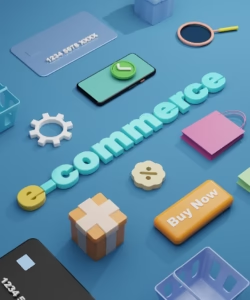Are you having a hard time coming up with unique topics for blogs? I can relate….Every Blogger knows that great topics open doors for great content and quality lead conversions. The struggle, however, is that more and more topics get saturated every day- and it’s becoming much more difficult to find fresh ideas that other bloggers haven’t covered.
Before Creating great content Here are 6 tips that will help you create unique, eye-catching, and irresistible topics when writing articles for your blog.
What should I blog about in 2022?
You can’t go wrong choosing one of these as a subject for your blog in 2022. But the simple rule is Just Find something that interests you.
Today’s world is evolving at such a rapid pace that it is difficult to predict what will be significant in 2022. More than ever before, the world is interdependent and connected. Since 2001, the number of nations with a population of over 1 million has more than tripled, and new markets and technologies are expanding globally.

We have always been motivated by curiosity and a desire to comprehend the world around us, though, and that is something that never changes. Consequently, it’s best if your writing and blogging are unique if you want to stand out in 2022.
What makes up Unique and irresistible Topics for Blogs?
A blog post is the best way to share your knowledge and experience on any issue with anyone who wants to find out about it. It can be about any topic that you are interested in and knowledgeable about. Blogging gives you an opportunity to express your opinion on various topics, which can be helpful for people who want to know more about them.
As a writer, it can be challenging to come up with ideas for your blog posts all on your own. You may find yourself asking “what makes a topic for a blog post unique?” or “how do I write about something different?” The good news is that there are ways you can get fresh ideas for your writing no matter how stuck you may feel at times.
A Unique Topic for a blog post is clear, concise and relatable. “People aren’t interested in you,” Dale Carnegie said. They’re only interested in themselves.” When readers can relate to a topic, they understand why it is important and are interested in learning more about it.
Therefore, rather than simply listing facts, make sure your audience understand why a topic is important and how it affects them. There is no such thing as a boring topic that cannot be made relatable. Consider the “why,” and then proceed.
6 Tips to Create Unique and Irresistible Topics for your Blog…
Here are six tips to help you come up with unique and irresistible
1. Let your Topic Provide a solution to a problem your readers are struggling with:
The first thing you should know about blogging is that it’s all about solving problems.
If people can’t figure out how to do something, or if they’re struggling with something they want or need, they’ll look online—and if they find an answer at your blog, they’re going to come back again and again. Remember that when deciding what type of content works best for your audience!
Give your readers a solution to a problem they’re having.
This is the best way to start or grow a blog because it puts you ahead of other bloggers in your niche right away. If you can solve their problems, they are more likely to return to your website.
Let’s take this blog post on ‘Tips to Create Unique and Irresistible Topics for your Blog,’ as an example. This is a blog post about how to curate great unique topics for a blog in order to generate more readers, traffic and leads for businesses. It’s not immediately clear why this would be relevant for anyone who wasn’t actively looking for information on how to write engaging blog posts. So what do we do?
We brainstorm ideas for how people might be able to use this information: maybe they want more traffic so they can sell more products or services, or maybe they’re trying to get more clients but can’t seem to attract them, and then assemble the topic in a way in which they will want to check out for the solution in the blog post.
2. Figure out what everyone else is writing about and Curate your Topic to beat them at it:
The easiest way to find content ideas is by looking at what everyone else is writing about.
If you’re in a niche that has been heavily covered, look for something that hasn’t been covered yet and cover it in a different way than others have done before. For example, if your blog is about social media marketing and every other blog in your niche covers Facebook ads or Instagram marketing, try focusing on Twitter ads instead! You’ll find it much easier to stand out from the crowd if there isn’t much competition within your niche because people aren’t covering those topics yet (or they’re covering them poorly).

One thing to note is – Although, We’re all trying to be unique, the truth is, the majority of us are not. We’re mostly writing about things that are already written about by other people. That’s why it’s important not only to focus on being unique, but also to make sure you’re better than the other people who are doing what you intend to do. While I encourage writing about things your competitors are not writing about or that aren’t completely main-stream yet, figure out loopholes in their posts and go the extra mile.
3. Browse the web for ideas and inspiration from other blogs in your niche, but don’t copy their content directly.
In 1996, Steve Jobs famously said: “Picasso had a saying — ‘good artists copy; great artists steal’ — and we have always been shameless about stealing great ideas.”
You shouldn’t be afraid of using other people’s ideas-
Browse the web for ideas and inspiration from other blogs in your niche, but, of course, don’t copy their content directly. Instead, try to write about a similar topic from a different perspective or from another point of view.

Use Google Trends to find out what people are searching for online and create content that’s related to those searches.
For example, if people are searching for “how to build great relationships”, then you could write an article about how to build great relationships utilizing the low hanging fruit strategy.
Look at what’s trending on social media sites like Facebook and Twitter, and create topics that connect to those trends.
Use a tool like BuzzSumo or SEMrush to generate topic ideas based on what’s trending on social media right now. BuzzSumo or SEMrush makes it easy to identify which articles are getting the most shares on social media and then dig deeper into why they’re popular so that you can apply these lessons to your own blog posts.
4. What Contrarian Arguments Can You Make with your Topic?
If you’re not familiar with contrarian arguments, they’re a great way to develop unique and irresistible topics, because they can provoke emotional response in people. If you make a statement that goes against the grain of conventional wisdom, it’ll get people talking.
Contrarian topics take angles that no one has ever thought of before. And the best way to do that is to look at it from a different perspective — a contrarian perspective. What can you say about your topic that other people won’t say or don’t believe? What arguments can you make about it that others won’t make?
If everyone else is talking about how great something is, then why not talk about how bad it is? If everyone else is saying something sucks, then why not say it rocks? If everyone else is saying something is impossible, then why not say it’s easy as pie?
5. Write about something you love or care about
Blogging can become boring if you are writing about things that do not interest you. A good rule of thumb is to write about something you love or care about. That way, writing becomes enjoyable rather than a chore! Write about something you love or care about – A great way to start off is by writing about something that interests you or something that makes you passionate. You can also write about things that frustrate or anger you because this will allow you to express yourself. Whatever it is that makes your heart beat faster, write about it!

The truth is your passion will shine through in your writing, which is important because it builds trust with your readers. If you’re passionate about something, there’s no doubt that other people will be interested in learning more about it too!
Note that when you want to write about things that interest you- check out what other bloggers are saying about it and see if there’s any overlap. This will give you an idea of whether or not there’s room in the market for another blog on that subject matter as well as how much competition there might be from other bloggers.
6. Make sure that your topic has enough depth
If you want people to read your post and share it with others, make sure that it’s not too shallow or general. If you’re going to write about a specific topic like “Social Media Tools” then spend some time researching all of the different tools available. Make sure that you include detailed information in each post so that readers will know exactly how they can use these tools in their own work or personal lives.
Add some humor or personal stories/experiences. A lot of people love reading blogs because they offer an opportunity to laugh at someone else’s mistake or enjoy reading about someone’s experiences with a particular topic or situation.
Should I use tools to come up with blog ideas?
Yes, you should use tools to generate blog topic ideas. For bloggers to gain their readers’ trust and establish authority, they must produce original, authoritative content. They must invest time in coming up with good ideas on their own in order to accomplish this.
To help you generate blog ideas, there are a variety of tools at your disposal. It’s critical to make the best decision possible. The following are some tools that may help you in coming up with blog ideas:
1. Google Keyword Planner:
One of the first things you need to do before you start writing a blog, is keyword research.
Google Keyword Planner is a free keyword tool that helps you find the most profitable keywords for your blog.
Keyword research is an essential part of any content marketing strategy. It helps you understand what people are searching for, which can help you come up with ideas for blog posts and topics.
Using Keyword Planner, you can see what people are already searching for and determine if it’s a good match for your brand. You can then use the keywords in your blog posts to target specific audiences or topics.

2. Google Trends tool:
Google Trends is a free tool that allows you to see how often a keyword was searched over time. You can see the volume of search traffic for any term in real time and compare it with previous months or years.
Google Trends provides an overview of the terms that are most popular on Google, but it doesn’t give you any information about their relative importance. That’s why it’s usually more useful to analyze trends over time.

3. BuzzSumo
BuzzSumo is a tool that helps you find the best content in your niche. It works by looking at the most popular content on your topic, and it will show you exactly how much time visitors are spending on each piece of content. Here’s how you use it:
Once you have found some good ideas, it’s time to start brainstorming.
The first step is to decide which blog topic you want to write about. This can be anything from startups to social media tips and tricks.
Once you’ve decided on a topic, start brainstorming ideas for posts. This is where BuzzSumo comes in handy as it shows you what people are talking about and how much attention they’re getting for their ideas.
You can also use BuzzSumo’s “Compare Topics” feature to see which topics get the most traffic and engagement around the web (and then try writing about those topics).
copy.ai
With the aid of the AI-driven copywriting tool Copy.ai, you can create more effective content faster. A high-quality blog post or any other kind of article can be produced automatically using it, including:
- Blog entries
- Product headings
A case study
You can choose from a variety of article types that the tool generates after using AI to analyze your content and spot patterns. You can use Copy.ai’s prewritten articles as a jumping off point for your own writing process, or you can choose to write your own articles by manually entering the text.
Conclusion
In a wrap,
We now know that while it’s easy to come up with blog topic ideas, it can be hard to come up with unique and irresistible topics.
Therefore, Brainstorm with a friend and Google. Use free tools like Google Keywords and Ubersuggest. Ask yourself what interests you most right now? What frustrates or inspires you? What do people keep asking you about? What’s been on your mind lately? What do you want to learn more about? What has the biggest impact on your life right now?
Look at other sites in your niche and see what they’re writing about (you can use BuzzSumo or Ahrefs). You can also use BuzzSumo’s Content Analyzer tool to see what content is popular within a specific topic or industry, which can help inspire ideas for new posts that might be of interest to your audience as well!





